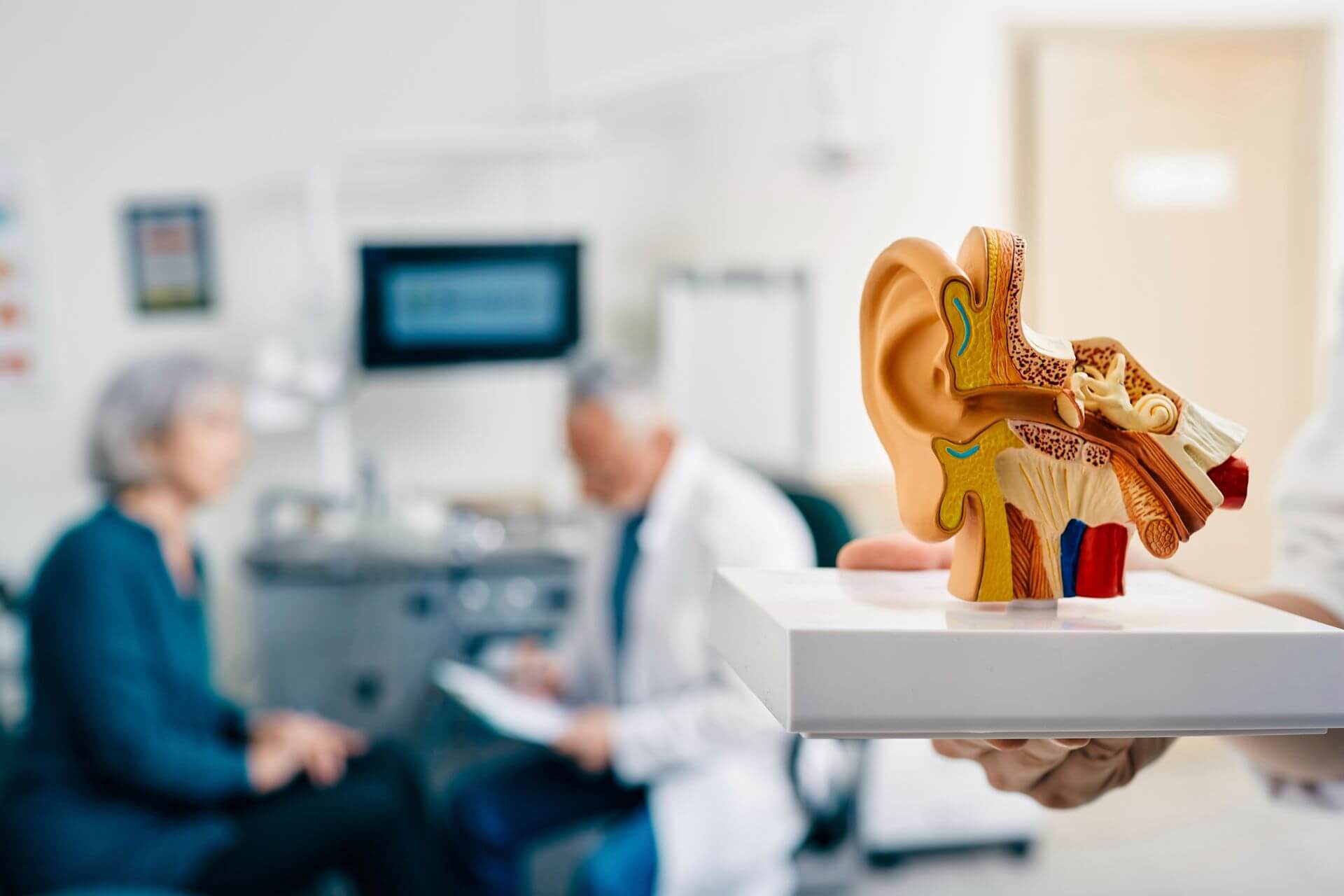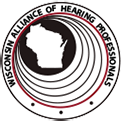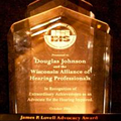Occupational hearing loss is a subtle but deadly issue that can occur anywhere from building sites to manufacturing floors. But what if workers aren’t the only ones who can find the answer? What if employers had the power to change this perception?
In 2025, the topic of workplace safety is changing, emphasizing proactive prevention, particularly regarding hearing loss. Employers note that you can promote a culture that prioritizes your employees’ health and well-being and protects them. Here’s how you can take action and change things.
Table of Contents
- Occupational Hearing Loss: Recognizing the Risks
- Regulations That Make a Difference
- Using Technology For Occupational Hearing Loss Prevention
- Role of Employers in Preventing Occupational Hearing Loss: Success Stories
- Why You Should Think About This
- Suffered Hearing Loss While Working? Contact Us!
- Sources
Occupational Hearing Loss: Recognizing the Risks
Noise-induced hearing loss can alter one’s life, and excessive exposure to loud situations can cause irreversible harm, impairing an employee’s capacity for communication, enjoyment of daily life, and, strangely, even job performance. The repercussions for firms include more absenteeism, decreased production, and possible legal penalties.
The good news is that occupational hearing loss can be avoided nearly completely. The initial action? recognizing the employer’s responsibility to protect employees’ hearing.
The Impact of Hearing Loss on Professions: How It Can Affect You and What to Do About It
Regulations That Make a Difference
Effective policies are the cornerstone of prevention. Following the guidelines established by the Occupational Safety and Health Administration (OSHA) should be the first step for employers. These regulations specify acceptable noise levels and the necessity of hearing preservation initiatives. But compliance ought to be the norm rather than the exception.
Forward-thinking companies go above and beyond. Businesses may pinpoint issues and put solutions in place, such as sound-dampening materials or quieter gear, by investing in sophisticated noise monitoring systems. In addition to fostering trust, open policies that put employee health first also aid in averting future, expensive legal disputes.
Many workers don’t know how to properly wear hearing protection or the long-term dangers of loud exposure. Employers can close this gap by holding frequent, interesting, and educational training sessions. Imagine holding workshops where employees receive individualized instruction on how to correctly fit earmuffs or earplugs in addition to learning about the risks associated with workplace noise. These classes have the power to transform passive participants into proactive stewards of their hearing well-being.
Using Technology For Occupational Hearing Loss Prevention
Workplace safety is being revolutionized by technological advancements, and hearing protection is no exception. We now have access to real-time decibel monitoring applications, noise-canceling headgear, and even AI-powered gadgets that notify employees when noise levels surpass acceptable limits. Employers who adopt these technologies make it very evident that their employees’ health is important.
Consider wearable equipment that monitors a person’s exposure to noise during the day. In addition to offering real-time data, these gadgets enable staff members to act quickly when levels rise. Employers may create a more secure and encouraging work environment by incorporating these technologies.
Take the example of a manufacturing business that observed an increase in complaints about hearing. The organization started a thorough hearing conservation program rather than waiting for issues to get worse. They held monthly training sessions, constructed noise barriers, and offered cutting-edge ear protection. Within a year, employee satisfaction soared and the number of reported hearing problems fell by 40%.
These kinds of stories are more than just inspirational tales – they are evidence that prevention is a wise investment for both organizations and personnel.
How Can Assistive Technology Improve Communication In The Workplace For Those With Hearing Loss
Role of Employers in Preventing Occupational Hearing Loss: Success Stories
The Dow Chemical Company’s exceptional dedication to reducing workplace noise dangers earned it the Safe-in-Sound Excellence in Hearing Loss Prevention Award in 2024. With more than 35,000 workers and more than 100 manufacturing sites spread across more than 30 countries, Dow put comprehensive solutions in place to deal with communication issues and excessive noise levels in its facilities. Adopting cutting-edge best practices and technologies to protect workers’ hearing was part of their proactive strategy.
Similar to this, Shaw Industries, a well-known flooring producer, created a comprehensive hearing conservation program that started by giving all employees premium foam earplugs with a Noise Reduction Rating (NRR) of 33. Despite the difficulties involved, Shaw required the wearing of earmuffs to provide its employees with the best possible hearing protection.
These examples show how businesses can successfully execute hearing conservation initiatives by following legal requirements, making investments in cutting-edge noise reduction equipment, and cultivating a safety culture through ongoing education and training. These programs enhance workplace productivity and well-being in addition to protecting workers’ hearing.
Why You Should Think About This
You already know how drastically your everyday life can change if you have hearing loss brought on by your employment. It’s more than just losing out on noises you used to enjoy or having trouble hearing conversations. Your mental health, social connections, and even your confidence at work can all be negatively impacted by hearing loss.
You don’t have to face this load alone. Filing a claim for workplace-related hearing loss is about more than simply receiving compensation and it is also about holding employers accountable for creating safer conditions. By taking action, you are not only fighting for yourself but also laying the road for stronger safeguards for your coworkers and those in comparable sectors.
Employers need to hear your story, both literal and figurative. Real change occurs when employees speak up and demand better. Your claim might serve as a wake-up call for businesses to reconsider their safety protocols and engage in real, long-term reforms.
At its root, this is about justice and accountability. Employers have a responsibility to ensure safe working conditions, and when they fail, employees should not bear the consequences alone. Together, we can advocate for change, ensuring that fewer individuals suffer the same losses you have.
If you suspect your hearing loss is caused by your job, don’t delay in taking action. We’re here to guide you through the process, from understanding your rights to submitting a claim. Allow us to stand by your side and demand responsibility and justice. Reach out today and take the first step in having your voice heard—loudly and clearly.
Suffered Hearing Loss While Working? Contact Us!
The Workers Compensation Program was established in 1911 to encourage employers to make the workplace safer by requiring safety programs and the use of safety devices. Since 1911, there have been over 2.5 million workers’ compensation claims filed. Hearing loss workers’ compensation claims now rank #3 in the number of occupational disease claims filed.
Hearing loss workers’ compensation benefits are largely undiscovered benefits covering hearing health care, which is often uninsured. Many health insurance policies and programs like Medicare do not cover hearing aid purchases but workers’ compensation can. It also pays for the disability of hearing loss just as it does for the loss of eyesight or other injuries.
Aging populations, advances in technology, and greater sensitivity to hearing loss are bringing more attention to financing hearing health care. For the most part, those who qualify for hearing loss workers’ compensation benefits are retired hearing-impaired workers who live on fixed incomes.
Always feel free to ask Johnson Law Offices about the process, the law, or an individual case. The legal, medical, and audio-metric questions that come into play in a hearing loss workers’ compensation claim can be complicated.
Sources
Contact Us
If you, or anyone you know, worked in noise and suffers from hearing loss, please do not hesitate to contact us.
Contact Us


